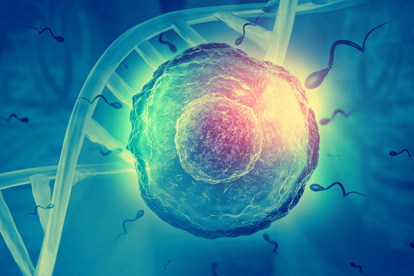
Oxidative stress impairs oocyte quality and melatonin protects oocytes from free radical damage and improves fertilization rate
Now that summer is in full swing, we know that vacations are on everyone’s agenda. But what about wellness when you’re on-the-go? Are your hormones in balance? Have you tested your hormonal levels at a reliable source? And are you carrying your BHRT with you when you travel so your hormones remain at optimum levels? Consult with a wellness practitioner like Guillaume Safah, Founder of Dubai’s only compounding pharmacy who explains this ‘art and science’ of preparing customised medications by doctor’s prescriptions. This practice goes back to apothecary origins down the centuries.
Hormones affect every cell in the body and are exceptionally powerful substances that can make you well or make you ill. Perhaps the most mystifying, controversial and inadequately approached area of medicine today is bio-identical hormone replacement therapy (BHRT). Until the mass-produced, one-size-fits-all commercial medications were introduced during the Industrial revolution, in the mid 1800’s, all medications were hand-prepared and totally customised.
Here is why Pharmaceutical companies cannot patent natural products and thereby have no financial incentive to evaluate or promote natural, bio-identical hormones that are simply made from either Yam or Soya. Since these global pharma giants also control the flow of information to doctors and also have a say in how they are trained in medical schools, it is no surprise that modern physicians have almost no knowledge of natural hormones.
The Controversy
When a major study came out in 2002 demonstrating that oestrogen can cause aggressive cancers, heart attacks, strokes and others, the reputation of hormones was severely tarnished. However, they forgot to mention that the hormones used in the study were hormones derived from horse urine, which have a completely different molecular structure that the body cannot recognise as its own. As a result, women worldwide developed cancers and heart diseases from these hormones and many are terrified today when they hear the word ‘hormone.’
Bio-identical hormones = NOT ‘alternative’ medicine.
It is a huge misconception for conventional physicians to think that Bio-identical hormones fall under the ‘alternative’ medicine category. The term Bio-identical when applied to hormones simply means that the entire hormone is molecularly identical to the hormones produced by the body. Unfortunately, most endocrinologists, gynecologists and others who specialise in hormones are only familiar with the synthetic hormones produced by drug companies and are not aware that the FDA approves the raw materials of bio-identical hormones. Since synthetic hormones do not match the hormones produced by the body, it can be argued that doctors who treat with these synthetic hormones are in reality practicing ‘alternative’ medicine. As ‘real’ medicine is when we treat the body with what it can recognise and utilise for its proper function.
Can your health wait until your doctor learns about BHRT? Nowadays, doctors rush through their day and don’t have the time to truly listen to their patients. In a rush to reach targets, most likely they can only treat the symptoms and not the cause of the problem. So the patient is still not healed at a deeper level. Yet hormonal balance is a serious issue that needs time to understand and rebalance if required. Keep in mind that for the various hormones our bodies produce there are thousands of receptor sites distributed all over the body. Each kind of receptor site has the power to alter the body’s behaviour in profound ways. After we reach our thirties, hormone levels start to change and fluctuate year after year. And since diseases are accumulations of a plethora of issues, when hormonal levels are not at optimum levels, the body will struggle to address these diseases, always trying to balance the hormones in the body for survival. The cycle can be vicious especially if the body cannot get the raw materials needed to tackle the hormonal imbalances.
The Result
The immune system weakens, ageing and age related diseases accelerate and the result is deterioration on many levels.
What are these hormones and what do they do?
Melatonin
It induces sleep. It shortens the time to fall asleep. It helps setting the pace of circadian rhythms such as sleep-awake, body temperature and hormone cycles. By age 80, a person has 70-80 percent drop in melatonin blood level.
Estrogen
There is over a dozen forms of oestrogens, the most important are Estradiol, Oestrone and Estriol. Oestrogens ‘feminise’ the body; they enlarge breasts and pelvis, redden the skin by increasing blood supply to the skin. Estradiol is responsible for vaginal lubrication, a healthy libido, the female voice and initiating ovulation. Oestrogen metabolites are sometimes good and sometimes bad and the liver converts most oestrogens into oestrone. A good oestrone prevents bones from crumbling and vessels from becoming inflamed, thereby helping to ward off heart attacks and strokes. A good oestrone protects from cancer, heart disease, bone loss, and memory loss. A bad oestrone can turn cells into cancer or make them grow into fibroids and cysts.
Progesterone
It is the feel-good hormone for women. The highest levels of progesterone are higher in the brain than anywhere else in the body, thereby it influences memory function, and some studies indicate that it’s very good for preventing and possibly even treating Alzheimer’s disease. Progesterone balances out oestrogen and undoes all the damage that bad oestrogen causes. It is also a thermogenic, so it helps fat burn by helping the thyroid gland to function better. Since it is a feel-good hormone, progesterone is also a natural anti-depressant. As the antidote to oestrogen, it helps prevent breast cancer, cancer of the ovaries, and probably cancer of the colon.
Testosterone
It builds bone, muscles, stamina and confidence. It strengthens and moisturizes the skin and can help weight loss. It is intricately involved in bone metabolism; thereby testosterone and progesterone are extremely important for preventing osteoporosis. Testosterone protects against obesity and diabetes and decreases the severity and incidences of these diseases by reducing fat mass and by increasing the efficacy of insulin to make glucose penetrate into the brain, muscles, the heart and other lean tissue targets. Testosterone in men safeguards the cardiovascular system: it makes the heart beat stronger, widens the lumen of the coronary arteries, increasing the blood supply to the heart. It reduces serum cholesterol, and reduces high blood pressure and makes blood more fluid.
Thyroid
It has various beneficial actions. Thyroid hormones (T3 and T4) increase blood flow, heart rate, metabolism, energy production and consumption, speed thinking, intestinal motility, thirst, urination, HDL (good) cholesterol, immune defences against various infections and cancer, among many other functions. They also decrease total LDL (bad) cholesterol, diastolic blood pressure, the amount of ‘myxedema’, the oedema consisting of mucous waste products outside the cells that is typical of thyroid deficiency. Both thyroid hormone levels gradually decline with age: that of T4 decreases approximately 10-20 percent from age 25 to 75 and that of T3 decreases by 25 percent. Thyroid treatment must include both T3 and T4 forms.
DHEA (Dehydroepiandrosterone)
Most of the actions of DHEA are achieved after the conversion into more potent hormones such as male and female sex hormones. Studies have shown that is dramatically decreases the risk of heart disease, diabetes, osteoporosis and cancer. DHEA also extends the life span of animals up to 50 percent. It enhances sexual function, cures impotence and boosts memory. It alerts metabolism to accelerate fat burning and foster gains in muscle mass. In a nutshell, DHEA makes your later years energetic and vibrant.

